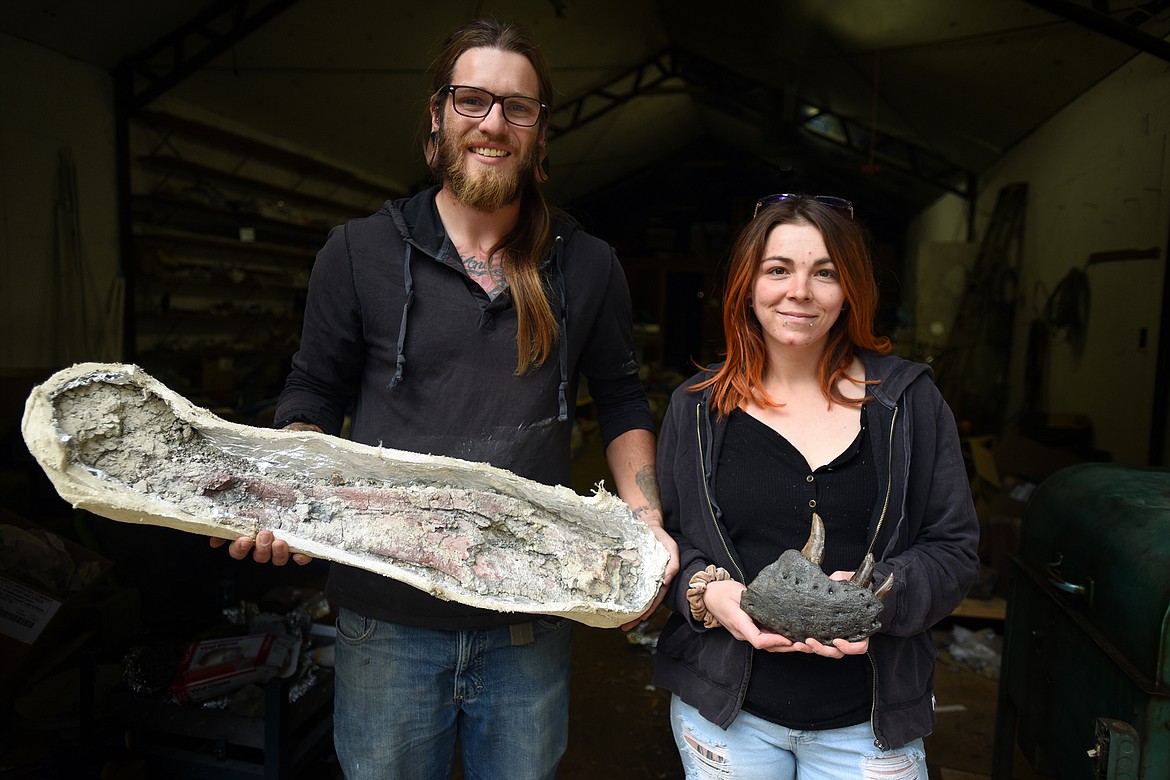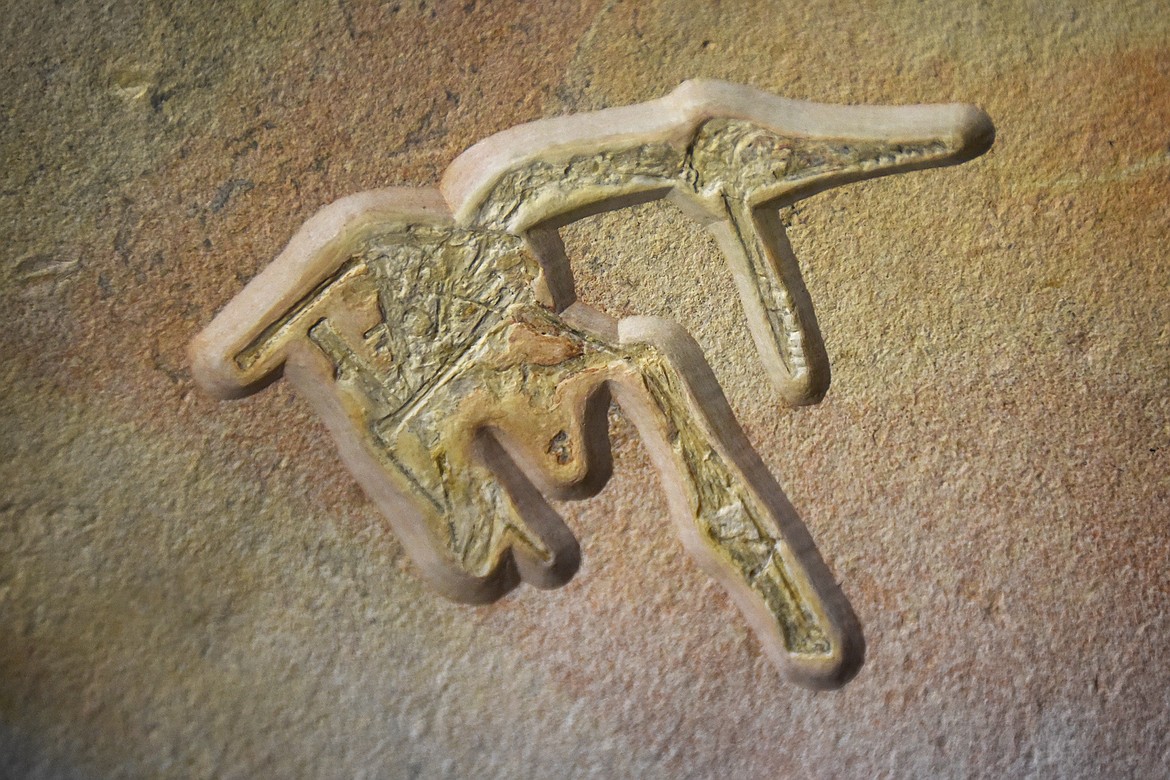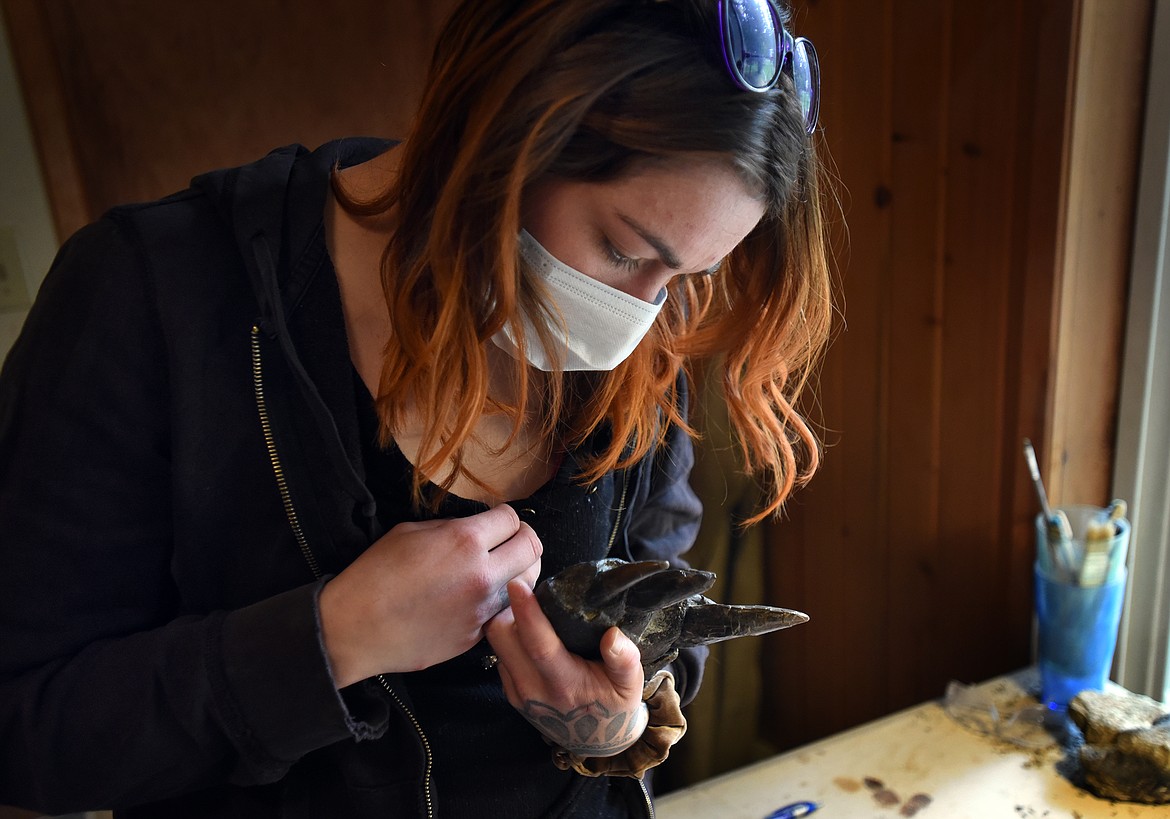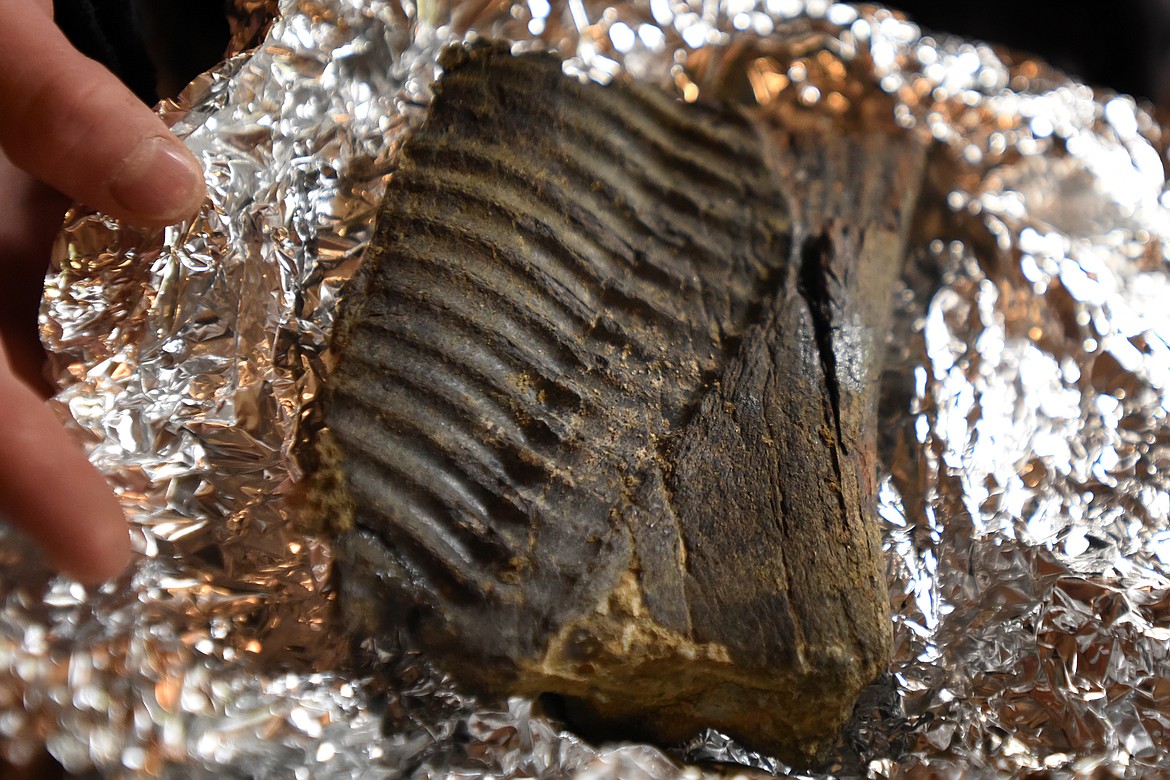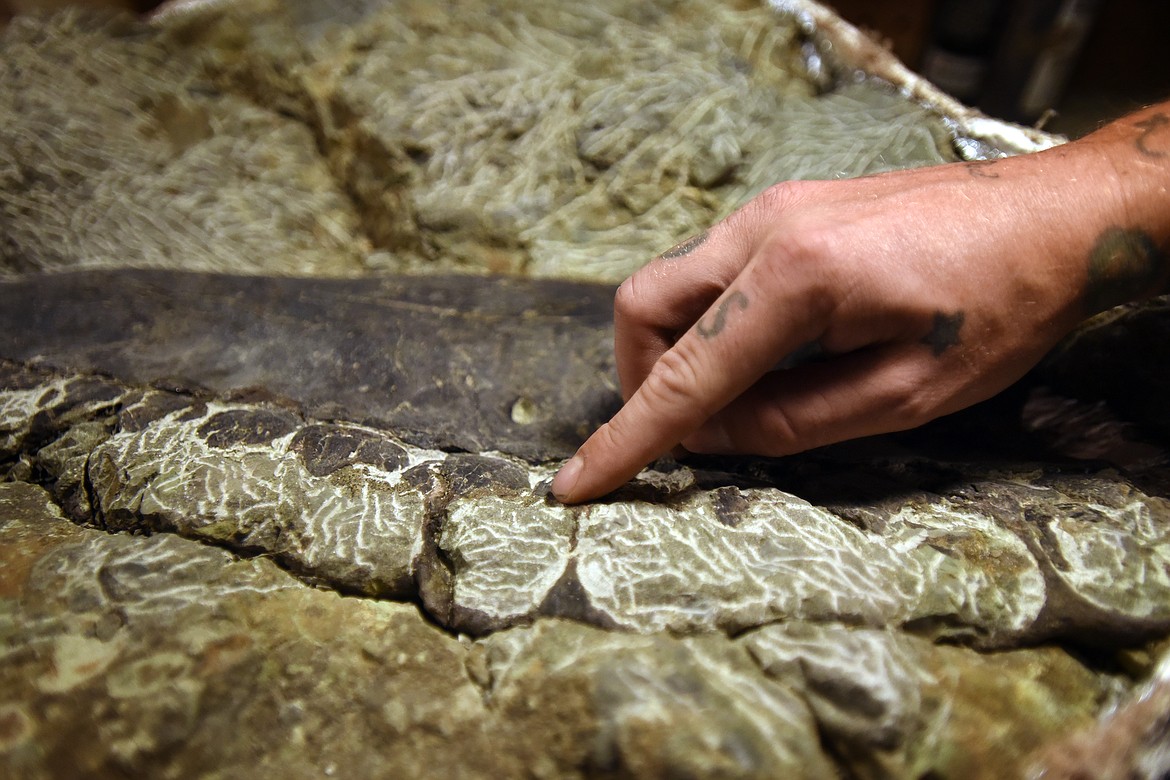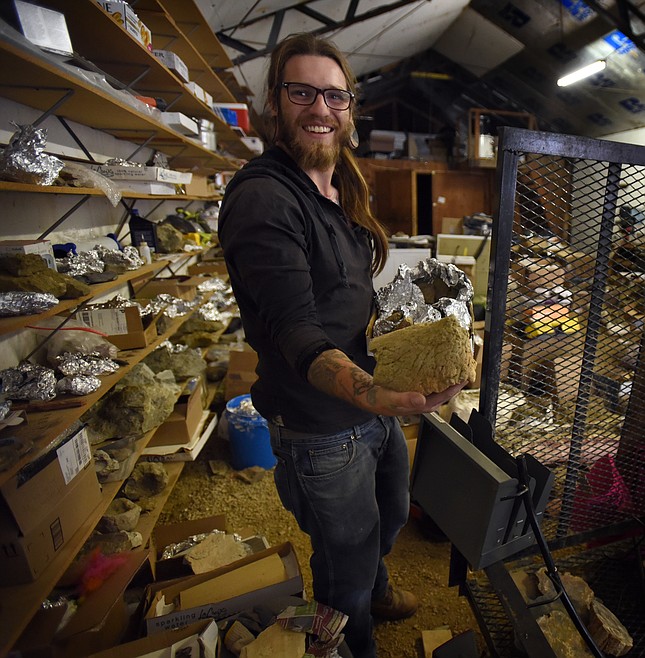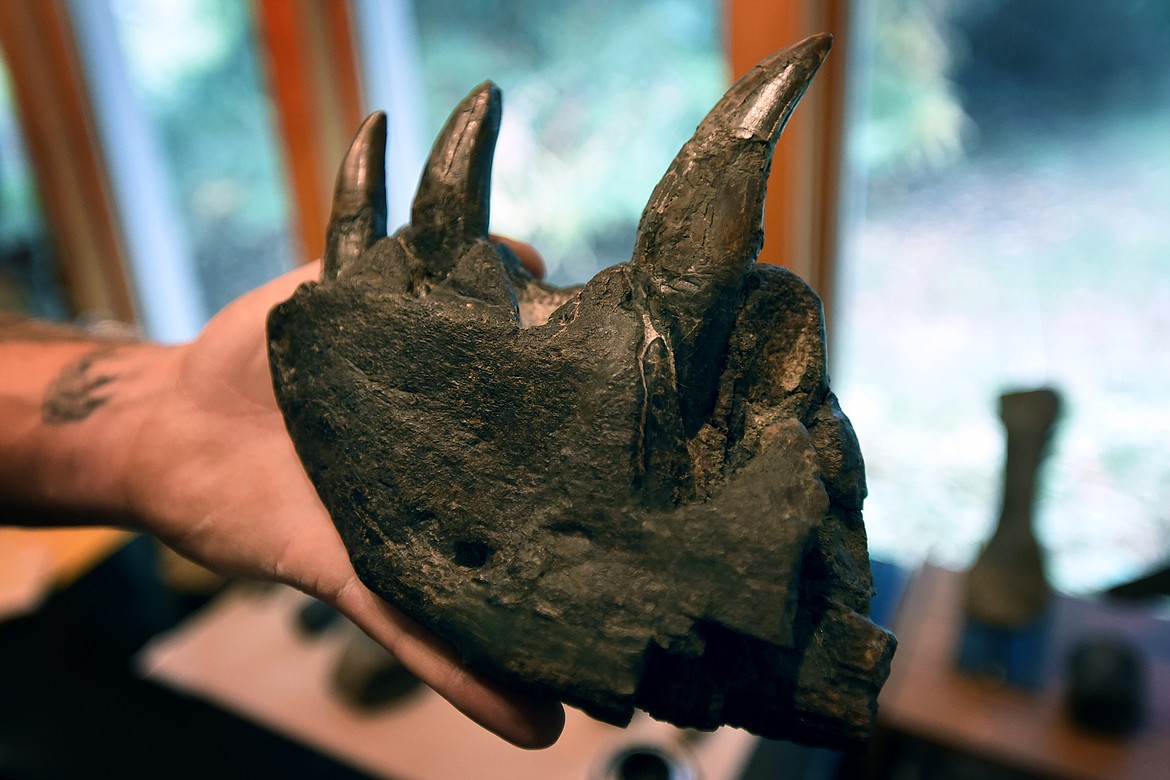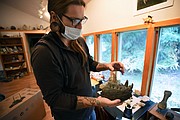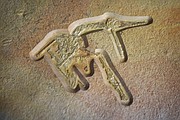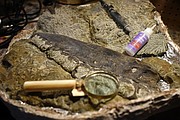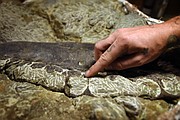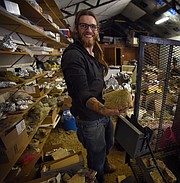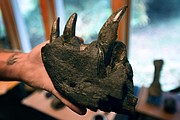Dino diggers: Local fossil hunters showcase new discoveries
Montana’s mountains and hillsides hold secrets.
The Big Sky State may be one of gold and silver, but for Flathead Valley-based fossil hunter Aaemon Jaeger and his fiance Chantel Ibach, the state is a treasure trove of bones — dinosaur bones.
What has been a good year for the dino hunting duo started with a very bad day for the region’s dinosaurs around 75 million years ago. Roughly 10 million years before the asteroid impact that would cause the extinction of the dinosaurs, another smaller tragedy befell much of Montana’s dinosaur population as a massive flood event wiped out countless dinosaurs on what was, at the time, a marshy coastal region next to a vast inland sea.
The sudden loss of so many dinosaurs led to a rich fossil bed at the quarry in north central Montana where the couple has spent the warmer months digging for the past five years.
While the duo has had exciting finds in the quarry over the past few seasons, this year was particularly exciting with the discovery of a partial Daspletosaur skull.
The apex predator of its time, roughly 74.2 million years ago, the Daspletosaurus was a Tyrannosaurus and a direct ancestor of the more famous Tyrannosaurus Rex.
“This is kind of our Holy Grail from a site like this,” Jaeger said. “We are not going to find any complete animals at this type of site, but when you find a skull, that’s a very good day.”
With 23 bones comprising a Daspletosaur skull, the couple are very excited to say they have found at least five bones from this animal and possibly as many as eight, but who knows what else the surrounding rock may be hiding.
“This is not a situation where we find complete skeletons,” Ibach said. “The fast-moving water scattered everything, so we will find a lot of separate bones from a lot of animals, but nothing complete. A find like this is amazing.”
The rock surrounding the bones at their quarry shows signs of high energy, the telltale sign the sandstone was once the bottom of a prehistoric river bed. Other signs point to the large flood event that wiped out countless numbers of dinosaurs in the area surrounding the dig site.
While the exact cause of the flood, be it a tsunami from an earthquake or volcanic eruption, is unknown, what is known is that it was a massive event. The two quarries the couple are working in north central Montana lie 17 miles apart, but both exhibit exactly the same flood characteristics in the same rock layer.
LIKE A prehistoric Sherlock Holmes, Jaeger examines his bones, looking for clues as to what kind of animal he is looking at, and sometimes, what happened to end its life. Just finding the bones in the first place takes another kind of investigation as Jaeger routinely walks the hillsides of Montana looking for tiny pieces of bone called tailings, following their trail in hopes of finding their source in a much larger, more intact specimen.
“More often than not, those bone tailings come from one single bone that has been exposed to the elements and is eroding away,” Jaeger said. “That bone may already be partially gone, but odds are it is not the only bone in the area.”
Finding a new bone is exciting, but that is also when the painstaking and nerve-racking work begins. Getting a bone out of the ground is not easy and takes hours upon hours of work. Each move can lead to disaster as one tiny slip of the wrist can damage bone that has sat perfectly preserved for eons.
Bones are carefully encased in a foil and plaster jacket to protect the delicate materials before the entire surrounding rock, typically 100 to 120 pounds, is extracted for transport to the prep area between Columbia Falls and Whitefish.
“I always joke when I break something that it managed to survive 74 million years in the ground, but couldn’t last 20 minutes with me,” Jaeger said with a laugh. “There’s a lot more to what we do than just finding the bones and getting them out of the ground. Once you find a bone, you have to identify what species of animal it came from and that can be very tough. Using taxonomy, we learn to identify certain traits in the bones that help us tell the animals apart. It’s all hard work, but one-hundred percent worth it.”
A RARE mass mortality bed teeming with bones, the main quarry extends a quarter mile or more into the surrounding hillside, Jaeger estimates. With the ability to only quarry roughly 100 feet per year, the site should keep them busy for years to come.
What new discoveries await them? Only the rock knows for sure.
With the end of the digging season quickly approaching, Jaeger and Ibach hope the quarry has a few more secrets awaiting them this year, but if not, there is always next year.
“It’s been an amazing year, but I can’t wait to see what next year will have to offer,” Jaeger said. “Every season is a new adventure.”
Reporter Jeremy Weber may be reached at 758-4446 or jweber@dailyinterlake.com.


